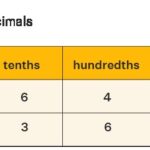The comparative and superlative forms of adjectives are used to compare things. This article explains how to form the comparative and superlative of “careful,” along with examples and related grammar rules.
Forming Comparative and Superlative Adjectives
Comparative adjectives compare two things, while superlative adjectives compare three or more things, identifying the item that possesses the quality to the greatest degree. The formation of comparative and superlative adjectives depends on the number of syllables in the original adjective.
One-Syllable Adjectives
For one-syllable adjectives, add “-er” for the comparative and “-est” for the superlative. For example:
- Old: older, oldest
- Long: longer, longest
Adjectives Ending in “-e”
If the adjective ends in “-e,” simply add “-r” for the comparative and “-st” for the superlative:
- Nice: nicer, nicest
- Large: larger, largest
Adjectives Ending in a Vowel and a Consonant
When an adjective ends in a vowel followed by a consonant, double the final consonant before adding “-er” or “-est”:
- Big: bigger, biggest
- Fat: fatter, fattest
Adjectives Ending in “-y”
If an adjective ends in a consonant followed by “-y,” change the “y” to “i” before adding “-er” or “-est”:
- Happy: happier, happiest
- Silly: sillier, silliest
Comparative and Superlative of “Careful”
“Careful” is a two-syllable adjective. While some two-syllable adjectives can take either “-er” and “-est” or “more” and “most,” “careful” follows the general rule for two-syllable and longer adjectives. Therefore:
- Comparative: more careful
- Superlative: most careful
For example:
- Comparative: “He is more careful than his brother when driving.”
- Superlative: “She is the most careful student in the class.”
Two-Syllable Adjectives: Exceptions to the Rule
Certain two-syllable adjectives can form comparatives and superlatives in two ways: by adding “-er”/”-est” or by using “more”/”most.” These include words like:
- Common
- Cruel
- Gentle
- Handsome
- Likely
- Narrow
- Pleasant
- Polite
- Simple
- Stupid
For example, you can say “He is handsomer” or “He is more handsome.” Both are correct.
Irregular Adjectives
Some adjectives have irregular comparative and superlative forms. These must be memorized:
- Good: better, best
- Bad: worse, worst
- Far: farther/further, farthest/furthest
Using Comparative and Superlative Adjectives with “Than” and “The”
When using comparative adjectives, use “than” to introduce the thing being compared. For example: “My car is newer than your car.”
When using superlative adjectives, use “the” before the adjective. For example: “This is the biggest house on the street.”
Conclusion
Understanding how to form and use comparative and superlative adjectives correctly is essential for clear and effective communication. Remember the rules outlined above, particularly that the comparative and superlative of “careful” are “more careful” and “most careful,” respectively.
